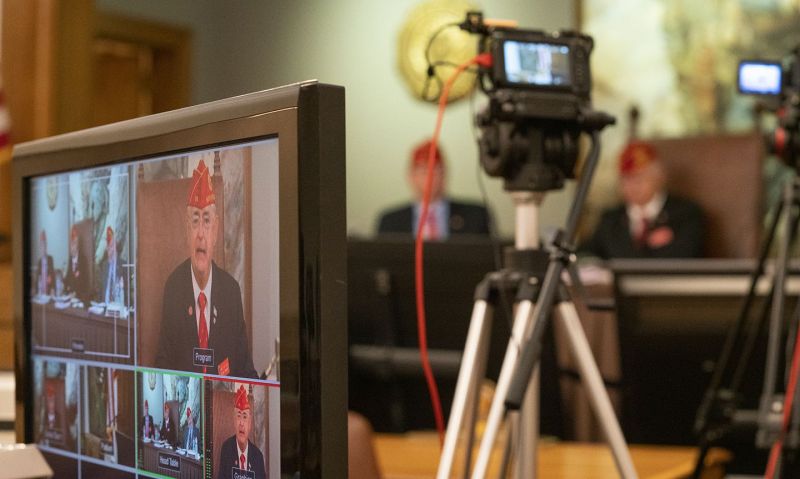
90 percent renewal rate, 100,000 new members and 100 percent Consolidated Post Reporting continue for 2021.
As American Legion National Commander James W. “Bill” Oxford leads the organization again for the 2020-2021 membership year due to the pandemic, he is continuing his same three goals announced upon his election in August 2019.
These goals focus on membership growth for 2021:
- 90 percent renewal rate
- 100,000 new members recruited
- 100 percent Consolidated Post Reporting
“A successful membership program is critical if we are to continue supporting our four pillars, especially helping our veterans and their family,” said Membership & Post Activities Committee Chairman Jay Bowen of Colorado during his remarks to the NEC. “It requires us to be proactive, roll up our sleeves and put in the effort.”
Bowen shared that the 2020-2021 membership year is “off in the right direction.”
The 55 percent American Legion membership target date is Oct. 15. So far, 41 departments have met or exceeded this target date – an increase of four departments from this time last year.
Bowen said two other encouraging items is that 27 departments have shown membership growth over their 2020 membership totals, and The American Legion is ahead of last year’s membership totals by nearly 19,300.
Renewal. The membership renewal rate for 2021 currently stands just over 56 percent – nearly 3 percent higher than this time last year.
“Retention must be the first priority to increase our membership and we must keep this in mind – retention starts the minute someone joins,” Bowen said. “It means we have to engage our members by conducting Buddy Checks not just when it is time to pay dues, it should be a routine leadership tool to check on our members health and welfare. We have to invite them to post and district training events, and we have to mentor them to be successful Legionnaires.”
To help increase training, staff from National Headquarters will be conducting training sessions on the last Tuesday of every month. Topics of discussion will be based on feedback from membership. The first session is Tuesday, Oct. 27, at 7 p.m. Eastern on Buddy Checks, and changes and updates to online membership processing.
“By actively engaging these members, we will not only put them in a position to succeed, we will also show them we care about their personal growth in The American Legion,” Bowen said. “When we do this retention is no longer a goal … it is a given.”
Recruiting. It’s been over a year since the passage of the LEGION Act – Let Everyone Get Involved in Opportunities for National Service Act – that filled in the gaps of membership eligibility. Any veteran with an honorable discharge who served since the day Pearl Harbor was attacked is now eligible to join The American Legion.
“The passage of the LEGION Act removed the barrier of worrying about whether a veteran is eligible based on when they served,” Bowen said. “It is our responsibility to engage all veterans and ask them to join.”
Bowen said that The American Legion was on track to meet the 100,000 new members prior to COVID-19 and the stay-at-home mandate. “There is no question we are living in unprecedented times. But we are not that special – every generation before us had an unprecedented event occur that defined that generation. Our rich history tells the stories of how we worked together to overcome and respond to those events. What will history record about our response?
“I submit to you it needs to say, 'The American Legion was there for veterans and community then, we are there now, and we will be there always.'”
Consolidated Post Reports (CPR). July 1 is the annual deadline for reports to be submitted. National Headquarters received 71 percent of the 100 percent goal of CPRs for the 2019-2020 year. The CPR data is used in a report to Congress, during interviews with national media outlets and more. Oxford stressed in his remarks to the NEC that even if a posts has no activities to report to still send in the CPR. “If a post has not been active, the CPR can let us know that perhaps a revitalization is needed. Regardless, information is a good thing.”
- Commander

